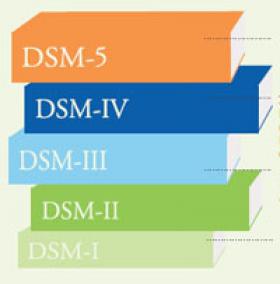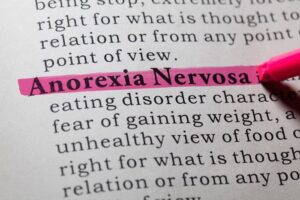The DSM 5 was released in 2013, and it made some significant changes to the way that eating disorders are classified. If you are struggling with an eating disorder, it is important to understand these changes so that you can get the most accurate diagnosis and treatment. In this blog post, we will discuss the key changes that were made to the DSM 5 regarding eating disorders. We will also talk about how these changes can help people with eating disorders get the treatment they need.
Contents
Defining DSM 5 And Eating Disorders

The fifth edition of the Diagnostic and Statistical Manual of Mental Disorders (DSM-V) was released in May 2013 by the American Psychiatric Association (APA). The DSM is used by mental health professionals to diagnose patients with mental disorders. The new edition includes significant changes to the criteria for diagnosing eating disorders, which are outlined below.
Previously, there were four distinct types of eating disorders recognized in the DSM: anorexia nervosa, bulimia nervosa, binge-eating disorder, and EDNOS (eating disorders not otherwise specified). However, in the new edition, these have been condensed into three categories: anorexia nervosa, bulimia nervosa, and binge-eating disorder.
The main change to the criteria for anorexia nervosa is that patients must now have a persistent fear of gaining weight or becoming fat, even if they are already underweight. This change was made to better align with the international classification system (ICD-11), which is used by the World Health Organization.
Is Eating Disorder In The DSM 5?

Yes, eating disorders are included in the DSM-IV-TR, and they will likely be included in the upcoming DSM-5 as well.
Anorexia Nervosa (AN)
Refusal to maintain body weight at or above the minimally normal weight for age and height (e.g., weight loss leading to maintenance of body weight less than 85% of that expected); or, in children and adolescents, failure to make expected weight gain during a period of growth.
Bulimia Nervosa (BN)
Recurrent episodes of binge eating. An episode of binge eating is characterized by both the following:
- Eating, in a discrete period (e.g., within any two hours), an amount of food that is larger than what most people would eat in a similar period under similar circumstances
- A sense of lack of control over eating during the episode (e.g., a feeling that one cannot stop eating or control what or how much one is (e.g., within any two hours), an amount of food that is larger than what most people would eat during a similar period and under similar circumstances
- A sense of lack of control over eating during the episode (e.g. a feeling that one cannot stop eating or control. However, there is a proposal to include them in the DSM-V, which is currently under development. The proposed new category of “eating disorders” would include anorexia nervosa, bulimia nervosa, and binge eating disorder.
What Are The Criteria Of Eating Disorder In DSM 5?
Eating disorders are serious mental illnesses that can have grave consequences on an individual’s health, productivity, and quality of life.
The fifth edition of the Diagnostic and Statistical Manual of Mental Disorders (DSM-V), published in 2013 by the American Psychiatric Association (APA), lists nine distinct types of eating disorders:
- anorexia nervosa,
- bulimia nervosa
- binge eating disorder
- avoidant/restrictive food intake disorder (ARFID)
- pica
- rumination disorder
- selective mutism
- substance-induced feeding or eating disorders
- feeding or eating disorders due to a medical condition
Each of these diagnoses has specific criteria that must be met for a person to be diagnosed with that particular disorder. For instance, to be diagnosed with anorexia nervosa, a person must exhibit a persistent restriction of energy intake that leads to significantly low body weight, and an intense fear of gaining weight or becoming fat. And disturbances in how they perceive their body weight or shape.
A person with bulimia nervosa, on the other hand, must regularly engage in binge eating. Followed by some type of compensatory behavior (purging) such as self-induced vomiting or the misuse of laxatives, diuretics, or other medications, fasting, or excessive exercise.
Binge eating disorder is characterized by recurrent episodes of binge eating. During this, a person consumes an unusually large amount of food in a short period (e.g., within two hours) and feels a lack of control over their eating.
How To Diagnose It?
A diagnosis of an eating disorder there are some methods. these are as follows:
- First, your doctor will conduct a physical exam to look for any underlying medical conditions that may be contributing to the eating disorder.
- Second, they may ask you about your eating and exercise habits as well as any mental health issues you may be experiencing. This can help them determine whether or not an eating disorder is present.
- Third, they may refer you to a mental health professional or nutritionist who can help assess your eating patterns and symptoms.
If you are diagnosed with an eating disorder, there are various treatment options available depending on the severity of your condition. It is important to seek help for eating disorders as early as possible, in order to minimize the negative impacts on your mental and physical health.
What are the treatment options?

There are various treatment options for eating disorders, and the most effective approach depends on the individual’s unique circumstances. Treatment typically involves a combination of therapy, medication, and nutrition counseling.
Therapy
It is a vital component of treatment for eating disorders. It can help individuals identify and change negative thoughts and behaviors related to their disorder.
Cognitive-behavioral therapy (CBT): It is one type of therapy that is often used to treat eating disorders. CBT focuses on helping individuals change the way they think about food, their bodies, and themselves. For instance, individuals with anorexia nervosa may be taught how to challenge the negative thoughts and beliefs they have about their bodies and food. CBT is effective in treating various eating disorders, including anorexia nervosa, bulimia nervosa, binge-eating disorder, and other specified feeding or eating disorders.
Family-based therapy (FBT): It is another type of therapy that may be used to treat eating disorders. FBT involves meeting with the family and/or caregiver(s) of the individual with the eating disorder. The goal of FBT is to help families identify and change negative patterns of behavior that may be contributing to the eating disorder. For instance, FBT may help families learn how to better support their loved ones with an eating disorder. And how to communicate more effectively. FBT is effective in treating adolescents with anorexia nervosa and bulimia nervosa.
Thus, both CBT and FBT are evidence-based treatments for eating disorders that are effective in numerous research studies. If you or someone you know is struggling with an eating disorder, please seek professional help.
Medication
Medication is sometimes used to treat eating disorders. Antidepressants, antipsychotics, and mood stabilizers may be prescribed to individuals with anorexia nervosa, bulimia nervosa, and/or binge eating disorder. These medications can help reduce symptoms of depression, anxiety, and impulsivity.
Nutrition Counseling
Nutrition counseling is often a vital component of treatment for eating disorders. A registered dietitian can help individuals with eating disorders develop healthy eating habits and restore their nutritional status. For instance, someone with anorexia nervosa may need help increasing their calorie intake to gain weight. Someone with bulimia nervosa may need help learning how to eat regular meals and snacks without overeating or purging. And someone with a binge eating disorder may need assistance developing portion control and making healthier food choices.
Inpatient treatment may be necessary for individuals with severe eating disorders who are at risk for medical complications. Residential treatment facilities provide 24-hour care and supervision in a safe environment.
Outpatient treatment may be an option for individuals with less severe eating disorders. This type of treatment typically involves meeting with a therapist and/or nutritionist every week. If you or someone you know has an eating disorder, it’s important to seek professional help.
Conclusion
It may be concluded that DSM 5 eating disorders are not to be taken lightly. These disorders can have a serious impact on an individual’s life and should be treated with care and respect. However, many people with eating disorders can go on to lead happy and healthy lives with the right treatment plan.
If you or someone you know is struggling with an eating disorder, please reach out for help.
For further information and suggestions, please contact Therapy Mantra. We have a team of expert therapists and psychiatrists that can help you overcome this problem. Get in touch with us right away to learn more about our services. You may also make an online therapy session or download our free Android or iOS app.


